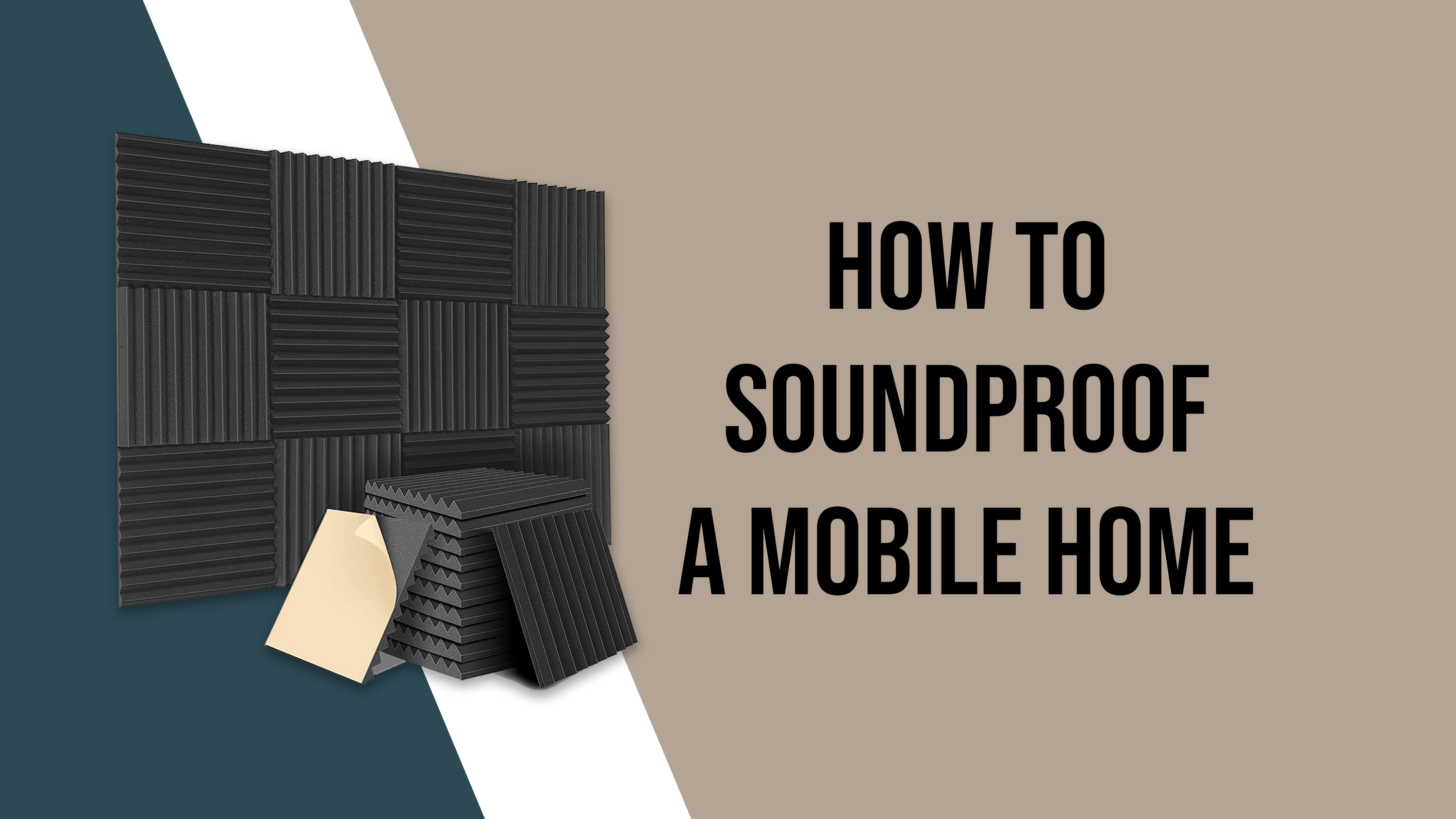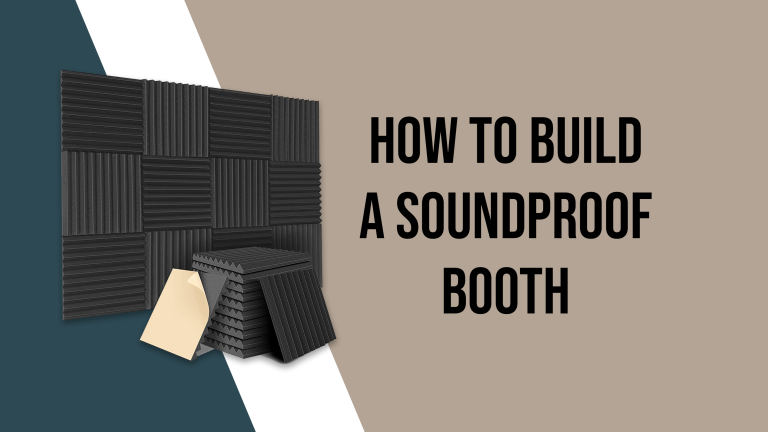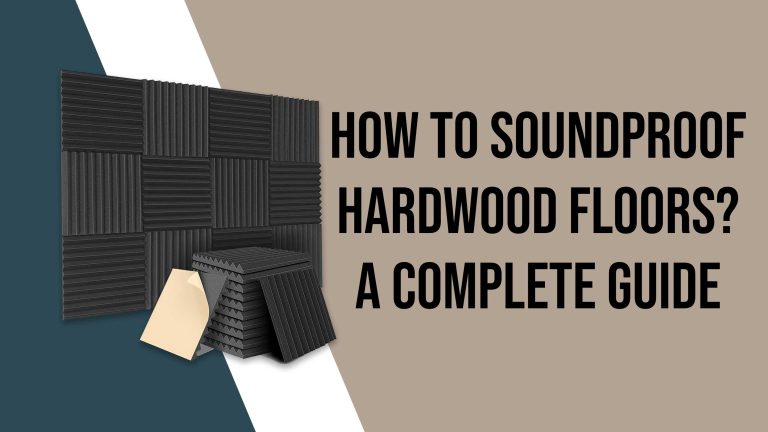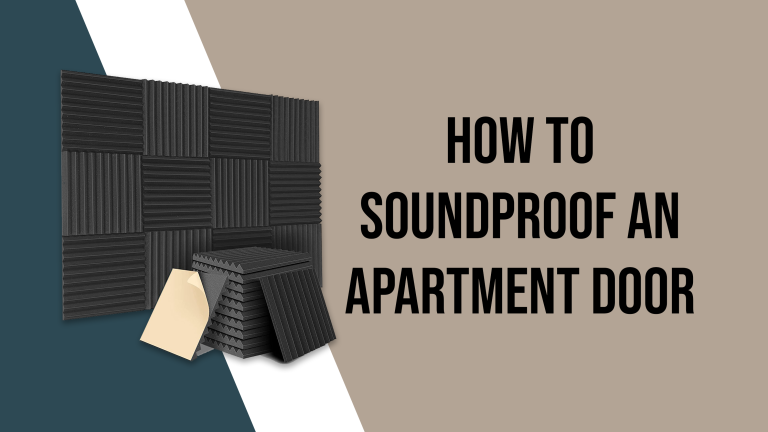How To Soundproof A Mobile Home
Mobile homes, while convenient and affordable, can present unique challenges when it comes to soundproofing. Thin walls and lack of insulation can make it difficult to block out external noise and prevent sound from travelling between rooms.
You can also soundproof French doors easily.
However, with the right materials and techniques, it is possible to effectively soundproof a mobile home.
How to Soundproof a Mobile Home?
To soundproof a mobile home, you can insulate the walls with soundproofing foam or fiberglass insulation, seal gaps and holes with acoustic sealant, use weather stripping on doors and windows, add mass to walls and floors with mass loaded vinyl or soundproofing curtains and apply soundproofing paint or drywall to walls and ceilings.
Also, consider installing solid core door, replacing any gaps and holes on the walls and floors, and installing soundproof flooring options like carpets or rubber matting.
Materials Needed
- Soundproofing foam or fiberglass insulation
- Acoustic sealant
- Weather stripping
- Mass loaded vinyl or soundproofing curtains
- Soundproofing paint or drywall
Soundproofing a Mobile Home: Step By Step Guide
Step 1: Insulate the Walls
The first step in soundproofing a mobile home is to add insulation to the walls. This can be done by installing soundproofing foam or fiberglass insulation between the wall studs. Be sure to check for any gaps or holes in the walls and seal them with acoustic sealant to prevent sound from passing through.
Step 2: Weatherstrip the Doors and Windows
Another major source of noise in a mobile home can be the doors and windows. To combat this, weatherstripping should be applied to the edges of doors and windows to create a tight seal and prevent sound from entering the home.
Step 3: Use Mass Loaded Vinyl and Soundproofing Curtains
Mass loaded vinyl is a heavy material that can be used to cover walls and floors to add mass and block sound. Additionally, soundproofing curtains can be hung in rooms to absorb sound and reduce echo.
Step 4: Apply Soundproofing Paint or Drywall
A final option for soundproofing a mobile home is to use soundproofing paint or drywall. These products are specially designed to absorb and block sound, and can be applied to walls and ceilings.
Tips For Soundproofing A Mobile Home
Here are some tips for soundproofing a mobile home:
Seal gaps and cracks in the walls, floors, and ceilings:
Use caulk or weatherstripping to seal gaps and cracks around doors, windows, and electrical outlets.
Add insulation to the walls, floors, and ceilings to help absorb sound and reduce noise transmission.
Use sound-absorbing materials:
Install acoustic paneling or insulation on the walls and ceilings to absorb sound and reduce echo.
Use heavy curtains or shades to cover windows, as they can also help absorb sound.
Add carpet or area rugs to floors to absorb sound and reduce echo.
Add mass to walls and ceilings:
Add a layer of drywall, mass-loaded vinyl, or other heavy material to the walls and ceilings to increase their sound-blocking capabilities.
Apply a soundproof paint or sealant to walls and ceilings to create a barrier that helps block sound from entering or leaving the room.
Reduce noise from outside:
Install window inserts or exterior storm windows to reduce noise from outside.
Add insulation to the roof and walls to block out noise from outside.
Address specific noise sources:
If noise is coming from a specific source like a neighboring home or a busy street, consider installing a barrier like a fence or a hedge to block the noise.
If the noise is coming from within the home, such as a washing machine or HVAC system, try to isolate or insulate the source of the noise to reduce the amount of sound that is transmitted through the walls, floors, and ceilings.
It is important to note, that some of the mentioned tips may not be feasible to be applied in a mobile home due to its structure, layout, or regulations. Therefore, it would be best to consult with professionals that are familiar with mobile home soundproofing before undertaking any measures.
FAQs
What material can block out sound?
Materials that can block out sound include mass loaded vinyl, acoustic insulation, acoustic sealant, weatherstripping, and soundproofing paint or drywall.
What’s the cheapest way to soundproof?
The cheapest way to soundproof a room is to use weatherstripping around doors and windows, and add mass to walls and floors using materials like heavy curtains, carpets, or even furniture. These materials are relatively inexpensive and can make a noticeable difference in sound reduction.
What can I use instead of soundproof?
Instead of soundproofing a room, you can use noise-cancelling products such as earplugs or headphones to reduce the amount of noise reaching your ears. Another option is to use sound-absorbing materials like heavy curtains, carpets, or furniture to reduce the echo and reverberation within a room.
How can I soundproof my house from inside noise?
To soundproof your house from inside noise, you can use sound-absorbing materials such as heavy curtains, carpets, or furniture to reduce echo and reverberation. You can also add insulation to walls, ceilings and floors, use soundproofing paint or drywall, and seal gaps or cracks in walls or doors.
Can egg cartons soundproof a room?
Egg cartons have been used as a DIY soundproofing solution, but they are not very effective. The small, irregular shapes of the cartons do not provide a tight seal, and are not a dense enough material to effectively block sound.
What is the most effective soundproof material?
The most effective soundproofing materials are those that combine mass and density to block sound, and insulation to reduce transmission of sound through walls and floors. Some examples are: Mass loaded vinyl, acoustic insulation, acoustic sealant, soundproofing paint and Drywall.
How do you make a simple soundproof room?
To make a simple soundproof room, you can install acoustic insulation in walls and ceiling, use weatherstripping to seal doors and windows, add heavy curtains or carpets to absorb sound, and seal any gaps or cracks in walls or floors.
How do you make a homemade soundproof wall?
To make a homemade soundproof wall, you can use mass loaded vinyl, soundproofing foam or fiberglass insulation, and acoustic sealant to block sound from passing through the wall. You can also add a layer of drywall or soundproofing paint for additional sound absorption.
What is the best material for soundproofing a wall?
The best material for soundproofing a wall will depend on your specific needs and budget. However, some effective options include mass loaded vinyl, soundproofing foam or fiberglass insulation, and acoustic sealant.
What can I put on walls to absorb sound?
To absorb sound on walls, you can use materials such as sound-absorbing foam panels, heavy curtains, or sound-absorbing paint. You could also cover a wall with a bookshelf filled with books, or use a carpet or area rug on the wall to absorb sound.
Is there a soundproof paint?
Yes, there is soundproof paint that is specially formulated to absorb and block sound. These paints contain sound-absorbing materials such as cork, cellulose, or hollow spheres and are thicker than standard paint. They are usually applied to walls and ceilings, but they may not block as much sound as other materials, such as mass loaded vinyl, acoustic insulation, acoustic sealant and drywall.
Conclusion
Soundproofing a mobile home can be a bit more challenging than soundproofing a traditional home, but with the right materials and techniques, it is possible to effectively block out external noise and reduce sound transmission between rooms. Start by adding insulation to the walls, weatherstripping the doors and windows, use mass loaded vinyl and soundproofing curtains, and apply soundproofing paint or drywall for optimal results.







